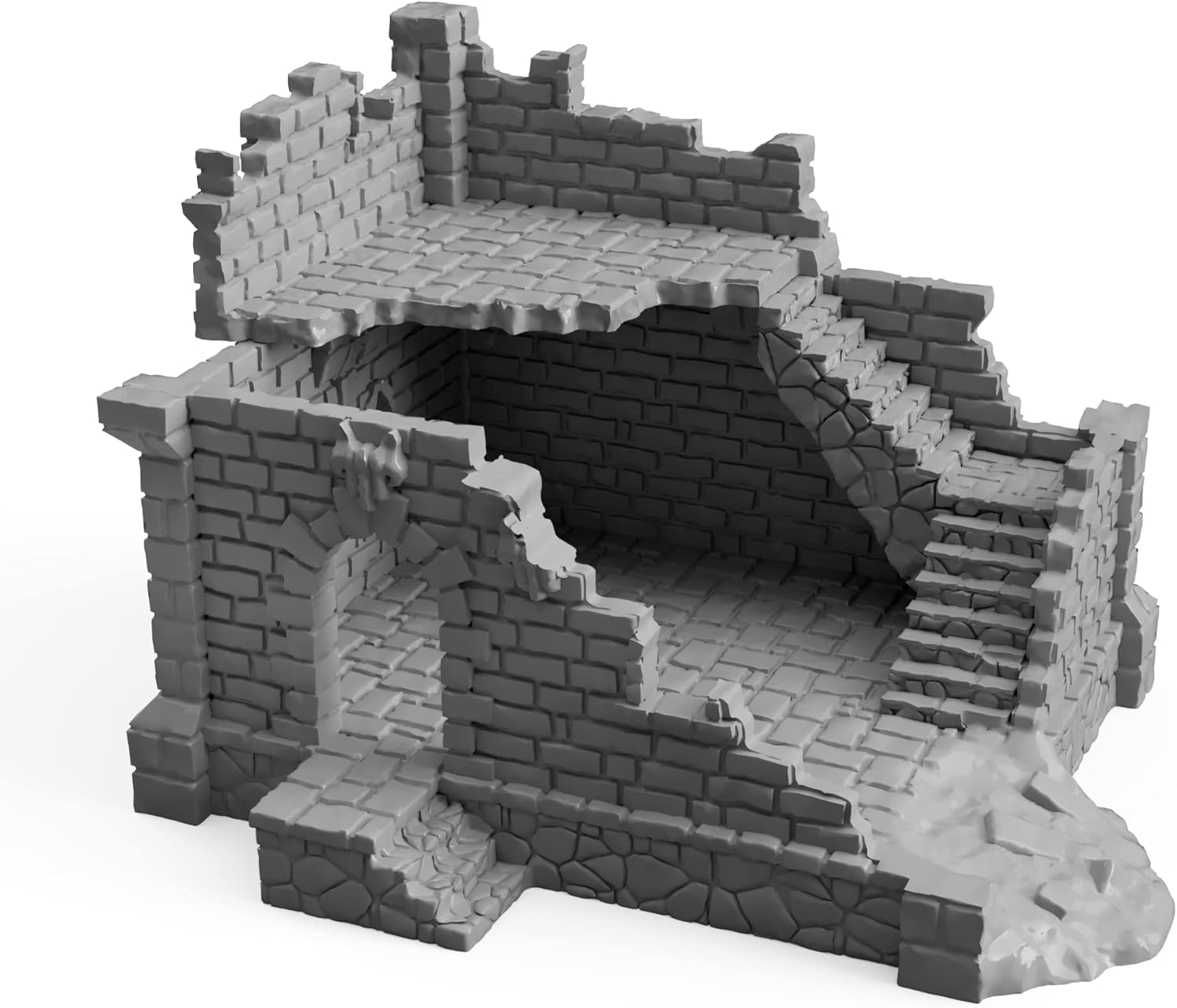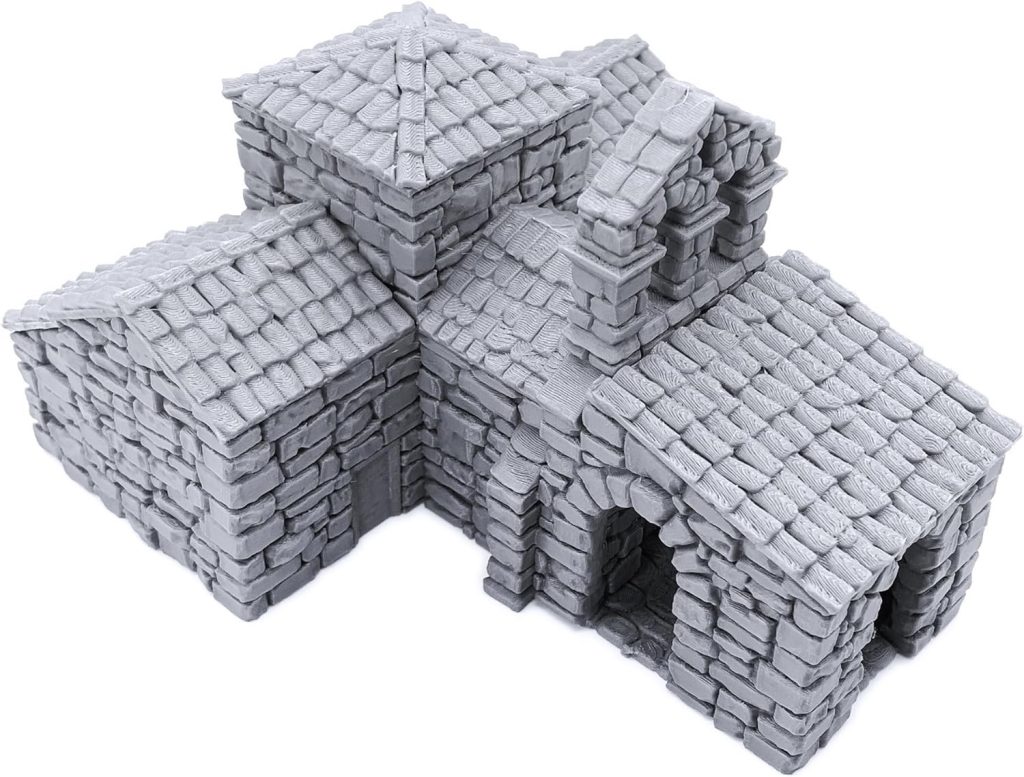
Building Your Adventure: Mastering Modular Terrain in Dungeons & Dragons
Introduction to Modular Terrain
Dungeons & Dragons, at its core, is a game of imagination and storytelling, where players and Dungeon Masters (DMs) weave tales of adventure, danger, and heroism. The use of physical terrain in D&D games elevates this experience, transforming abstract descriptions into tangible, visually captivating landscapes. These terrains, whether lush forests, sprawling dungeons, or mystical realms, become more than just backdrops; they are active elements of storytelling, engaging players in a more immersive and interactive world. The physicality of the terrain pieces allows players to better visualize the distances, obstacles, and strategic elements of their environment, leading to more dynamic and tactical gameplay.
The appeal of D&D terrains lies not just in their functional role but also in their ability to spark creativity. For many, the process of creating, painting, and setting up these terrains is a fulfilling hobby in itself. It offers a unique blend of artistry and craftsmanship, where every hill, building, or river crafted is a personal touch added to the game’s narrative. This level of customization ensures that no two gaming sessions are alike, as players find themselves exploring new, meticulously crafted worlds each time they sit down to play. The popularity of modular terrains in D&D communities is a testament to the desire for a more tangible, personalized gaming experience, where the boundaries of imagination are made manifest on the tabletop.
- What is Modular Terrain?
- Simple explanation: Modular terrain in Dungeons & Dragons (D&D) is like building blocks. Just like you can put together blocks to make different structures, modular terrain lets you create different landscapes and settings for your game.
- It’s made of pieces that you can rearrange to make new scenes and settings every time you play.
The Difference Between Modular Terrain and Traditional Set Pieces
- Traditional Set Pieces:
- These are like a movie set that doesn’t change. Once it’s built, it stays the same. Great for specific scenes but not flexible.
- These are like a movie set that doesn’t change. Once it’s built, it stays the same. Great for specific scenes but not flexible.
- Modular Terrain:
- Think of it like your favorite video game where you can move things around and change the world. It’s flexible and can be used to create countless different scenes and settings.
- Think of it like your favorite video game where you can move things around and change the world. It’s flexible and can be used to create countless different scenes and settings.
Advantages of Using Modular Terrain in D&D
- Flexibility:
- You can create a forest one day and a dungeon the next with the same pieces.
- You can create a forest one day and a dungeon the next with the same pieces.
- Reusability:
- You can use the same pieces over and over again in different games, saving money and space.
- You can use the same pieces over and over again in different games, saving money and space.
- Enhanced Creativity:
- It’s like being a director of your own movie; you can set the scene exactly how you imagine it.
- It’s like being a director of your own movie; you can set the scene exactly how you imagine it.
- Engagement:
- Players often find it more exciting and immersive when they can see and interact with the terrain.
- Players often find it more exciting and immersive when they can see and interact with the terrain.
- Practicality:
- Easy to store and transport, unlike large, fixed pieces.
In our exploration of modular terrain for Dungeons & Dragons, we find a diverse array of options, each with unique characteristics and benefits. Let’s delve into these varied types.
Plastic sets: These are known for their durability and often vibrant colors. They are a popular choice as they frequently come pre-painted and are easy to maintain. However, their higher price point and lesser customizability can be drawbacks for some.
Wooden sets: On the other hand, offer a classic and natural aesthetic. These pieces are timeless and allow for a high degree of personalization through painting or staining. The flip side is their need for more careful maintenance and their heavier weight, which might be a consideration for those who need to transport their sets.
The modern solution of 3D printed terrain is gaining popularity due to its high customizability. With 3D printing, the limits are almost boundless, allowing for the creation of unique pieces tailored to specific campaign needs. The downside is the requirement of access to a 3D printer and some level of proficiency in 3D design.
Homemade terrain solutions present an affordable and creative option. Utilizing everyday materials or craft supplies, these are perfect for the DIY enthusiast. However, they can be time-consuming to create and might lack the durability of other options.
When choosing the right type of modular terrain for your game, several factors come into play. It’s important to consider the specific needs of your campaign – the various environments you plan to explore will influence your choice. Budget is another crucial factor; while we all want the most immersive experience, it needs to fit within financial constraints. Additionally, the practical aspects of storage and portability are essential to consider, especially if you plan to transport your terrain. Lastly, your personal interest and skills in DIY projects can sway your decision – whether you prefer crafting your terrain or using ready-made pieces will guide your choice.
Principles of Modular Terrain Design
- Start with a Plan:
- Before diving into creation, sketch out your ideas. Think about the various landscapes your campaign might explore and design pieces that can be versatile for multiple settings.
- Before diving into creation, sketch out your ideas. Think about the various landscapes your campaign might explore and design pieces that can be versatile for multiple settings.
- Scale and Compatibility:
- Ensure your terrain pieces are in scale with your miniatures. Consistency is key for an immersive experience.
- Ensure your terrain pieces are in scale with your miniatures. Consistency is key for an immersive experience.
- Variety and Versatility:
- Aim for a range of pieces – hills, flat lands, water features, and buildings. The more variety you have, the more dynamic your game will be.
- Aim for a range of pieces – hills, flat lands, water features, and buildings. The more variety you have, the more dynamic your game will be.
Step-by-Step Guide to Creating Modular Terrain
- Gathering Materials:
- List what you’ll need based on your design plan. Common materials include foam boards, paint, glue, and modeling tools.
- List what you’ll need based on your design plan. Common materials include foam boards, paint, glue, and modeling tools.
- Basic Construction:
- Start with simple shapes and basic structures. Cutting foam boards into various shapes forms the base of your terrain.
- Start with simple shapes and basic structures. Cutting foam boards into various shapes forms the base of your terrain.
- Detailing and Texturing:
- This is where creativity shines. Use paints, sand, or flocking materials to add texture and bring your terrain to life.
- This is where creativity shines. Use paints, sand, or flocking materials to add texture and bring your terrain to life.
- Final Touches:
- Add unique elements like trees, water effects, or artificial grass. These details can make your terrain stand out.
- Add unique elements like trees, water effects, or artificial grass. These details can make your terrain stand out.
Incorporating Thematic Elements for Enhanced Storytelling
- Match the Theme of Your Campaign:
- If your campaign is set in a mystical forest, include lots of trees and greenery. For a desert theme, sandy landscapes and dunes would be fitting.
- If your campaign is set in a mystical forest, include lots of trees and greenery. For a desert theme, sandy landscapes and dunes would be fitting.
- Interactive Elements:
- Think about adding features like removable roofs, secret compartments, or traps. These can add an exciting and interactive element to your game.
- Think about adding features like removable roofs, secret compartments, or traps. These can add an exciting and interactive element to your game.
- Consistency in Aesthetics:
- While variety is good, maintaining a consistent look and feel helps in creating a believable and immersive world.
- While variety is good, maintaining a consistent look and feel helps in creating a believable and immersive world.
Dungeon and Dragons Terrain FAQ's
What is modular terrain in Dungeons & Dragons?
Modular terrain refers to customizable, interchangeable pieces used to create physical landscapes for D&D gaming sessions, enhancing the visual and interactive aspects of the game.
Why use modular terrain instead of digital maps?
Modular terrain adds a tactile and visually immersive element to gameplay, making encounters and exploration more engaging and memorable than digital maps.
Can I make modular terrain if I’m not very crafty?
Absolutely! There are many simple and beginner-friendly methods to create modular terrain, and it can be a fun way to develop your crafting skills.
How much does it cost to start making modular terrain?
The cost can vary widely depending on materials and complexity. You can start with budget-friendly materials like foam board and gradually invest in more advanced supplies.
What materials do I need to make basic modular terrain?
Basic materials include foam boards, craft knives, paint, glue, and materials for texturing like sand or flocking.
How do I store and transport modular terrain?
Modular terrain can be stored in stackable boxes or shelves. For transport, consider lightweight materials and portable storage solutions like plastic bins or custom bags.
Can modular terrain be reused for different campaigns?
Yes, one of the main advantages of modular terrain is its reusability. You can rearrange and adapt the pieces for various campaigns and settings.
Is it better to buy pre-made modular terrain or make it myself?
It depends on your budget, time, and crafting interest. Pre-made terrain is convenient but can be expensive, while DIY terrain is customizable and often more affordable.
How do I make my modular terrain durable?
Use sturdy materials and proper sealing techniques. Applying a protective coating or varnish can help extend the life of your terrain.
Can modular terrain enhance the gameplay experience?
Yes, modular terrain can significantly enhance gameplay by providing a more tangible and dynamic setting, which can inspire creativity and engagement in players and Dungeon Masters alike.




